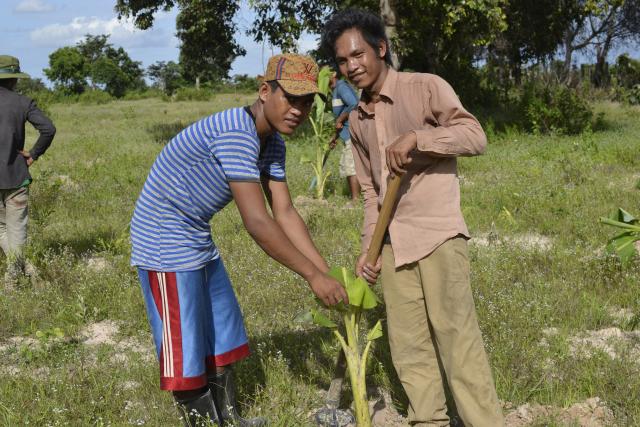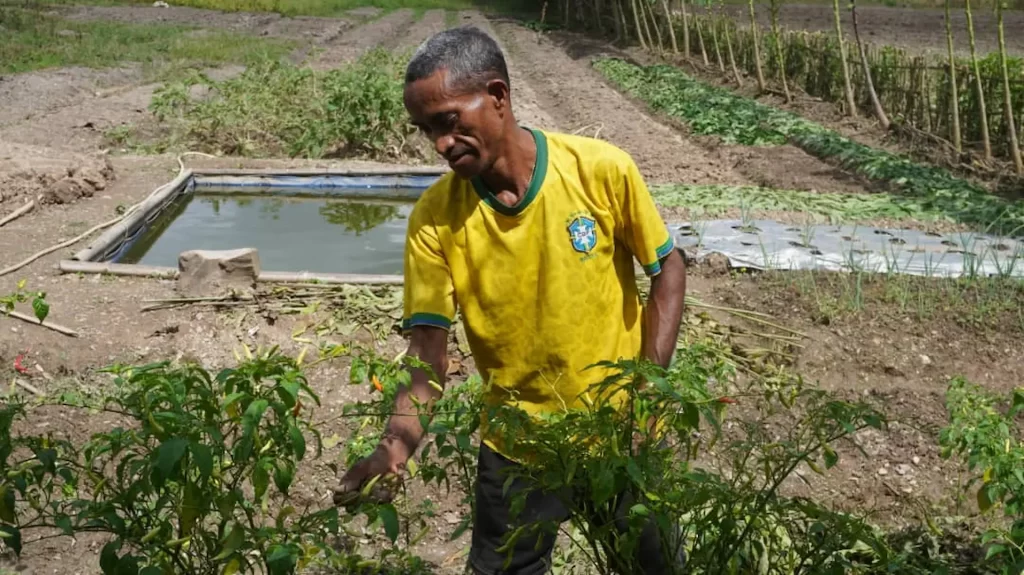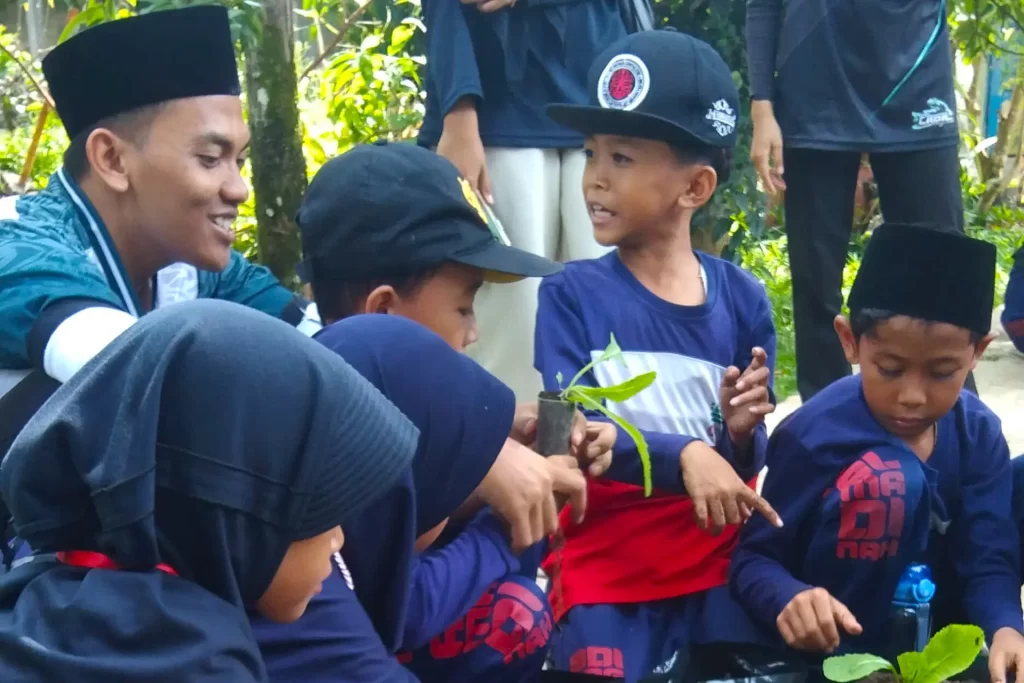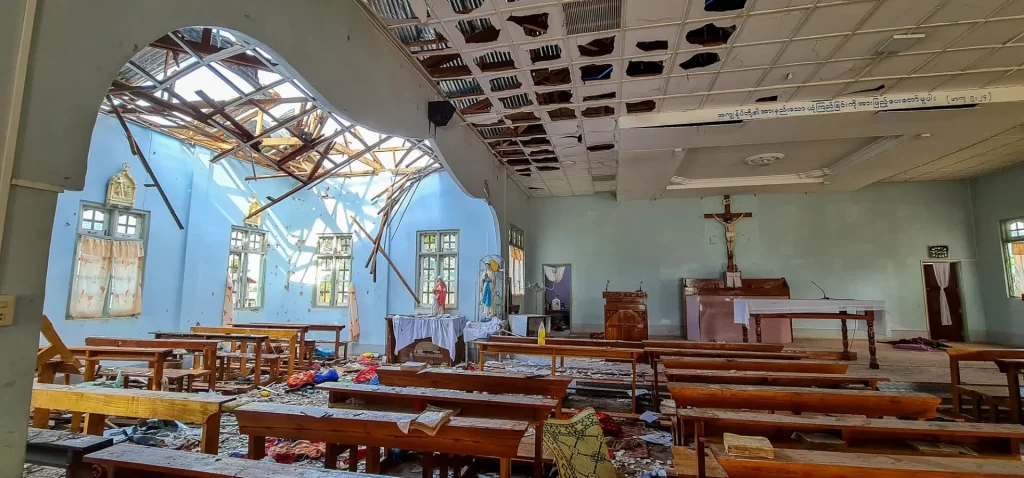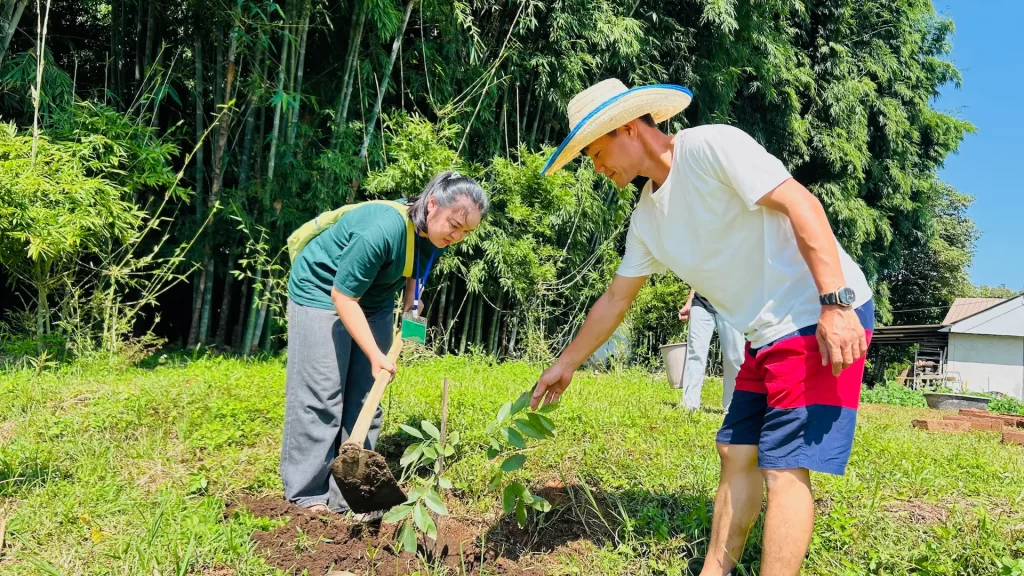The Jesuits in Cambodia have initiated a carbon offset programme in conjunction with the modest seedling nursery set up in Banteay Prieb, the Jesuit-run vocational school for people with disabilities, in late 2012. Primarily intended for Jesuits within the country, volunteers and visiting friends, the carbon offset programme provides an opportunity for air travellers to counterbalance the carbon emissions from their flights to or from Cambodia.
The process is as follows: anyone who agrees to participate in the carbon offset programme has to complete a form indicating the airplane route including a list of transiting airports to and from Cambodia. Their approximate carbon emission is then calculated using standards set by the International Civil Aviation Organization, which takes into consideration factors such as the type of aircraft used, number of passengers, and known fuel consumption rate. Their CO2 emissions are then translated to the number of trees needed to be grown and for how long in order to absorb the emissions of that particular trip. These calculations are based on the average amount of carbon stored in native hardwood trees in Cambodia. The cost of planting and maintaining the specific number of trees for the number of years needed to absorb their emissions is then given to the traveller. The traveller confirms participation through payment of this cost, and is given a code number, which applies to a particular tree that has already been planted somewhere in Cambodia.
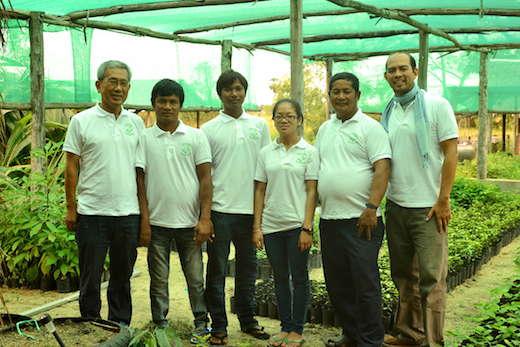
“The carbon offsetting program is merely a way to maximize the value of the trees we plant,” said Fr Gabby. “To be sure, we do not grow and plant trees in order to support a programme that offsets carbon emissions. Rather, we desire to plant as much trees and as many species as we can in communities that will care and protect them.”
The growing of seedlings has now become an integral part of Banteay Prieb’s curriculum. In 2013, 22 agricultural students with disabilities spent three weeks of their school year in the nursery, learning about the techniques used in growing different native hardwood trees from seeds.
The nursery project has grown considerably in the last year. In May 2013, six months or so after it was set up, the nursery had nearly 2,000 seedlings of seven species of Cambodian hardwood trees. Today, there are nearly 10,000 seedlings of 17 species.
The impetus for the Ecology Programme stems partly from a desire to try to give back to the forest what Banteay Prieb has taken for the wheelchairs and wooden sculptures it has been producing for more than 20 years.
“We continue to search for seeds of the woods we use for the wheelchairs and sculptures we produce. The wood used for the wheelchairs we make, Daunchem (Terrietia javanica), remains the most elusive. It seems we will need to travel deep into the forests of the Northeast to find seed sources of this species,” said Fr Gabby.
Fortunately, a nearby source of seeds and seedlings of Dai Khla (Gardenia angkoriensis), the popular white wood used in many Banteay Prieb sculptures has been found, and the red wood, Thnong (Pterocarpus macrocarpus), from which most of the sculptures are made, is the most easily available.
The latest addition to the nursery is Reang Teuk (Barringtonia acutangula), a flood forest species, which together with Phtol (Diospyros cambodiana) and Tauor (Terminalia cambodiana), comprise the dominant and important tree species around the Tonle Sap Lake and within its nearby floodplains.
“Hopefully, the year to come will bring further growth in new respects,” said Fr Gabby. “We are not a big operation, but we value all the young trees we plant, for we believe that in every seedling that survives is a forest awaiting.”
For more information on Banteay Prieb, visit www.banteayprieb.org.
Related article: https://jcapsj.org/content/supporting-forests-and-communities

